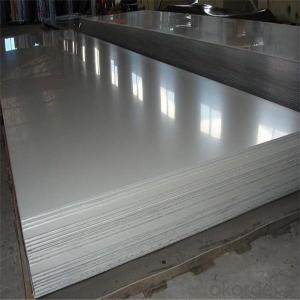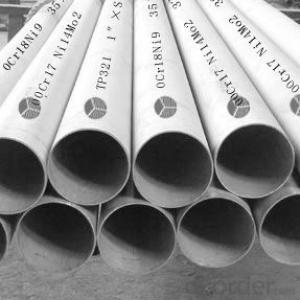Super Duplex Stainless Steel
Super Duplex Stainless Steel Related Searches
Best Paint For Stainless Steel Blanket Insulation For Steel Buildings Primer For Galvanized Steel Foam Filter For Stainless Steel H S Code For Stainless Steel Surface Grinding Wheels For Stainless Steel Surface Grinding Wheels For Hardened Steel Hole Saw For Stainless Steel Paint For Stainless Steel Stainless Steel For BbqHot Searches
Steel Mesh Panels For Sale Price For Stainless Steel Scrap Scrap Price For Stainless Steel Price For Stainless Steel Stainless Steel Tank For Sale Stainless Steel Sheets For Sale Cheap High Tea Sets For Sale Stainless Steel Tanks For Sale Stainless Steel For Sale High Density Fiberboard For Sale Solar Hot Water Collectors For Sale Scaffolding For Sale In Uae Scaffolding For Sale In Ireland Scaffolding For Sale In Houston Type Of Inverter For Solar Price Of Shipping Containers For Sale Types Of Inverter For Solar Stock Price For Aluminum Used Solar Inverter For Sale Steel Mesh Panels For SaleSuper Duplex Stainless Steel Supplier & Manufacturer from China
Okorder.com is a professional Super Duplex Stainless Steel supplier & manufacturer, offers integrated one-stop services including real-time quoting and online cargo tracking. We are funded by CNBM Group, a Fortune 500 enterprise and the largest Super Duplex Stainless Steel firm in China.Hot Products
FAQ
- The main difference between 2205 and 316 stainless steel pipes lies in their composition and properties. 2205 stainless steel is a duplex stainless steel, meaning it consists of both austenitic and ferritic phases. This makes it highly resistant to corrosion and provides excellent strength and toughness. It has a higher yield strength compared to 316 stainless steel, making it suitable for applications where higher strength is required, such as in the oil and gas industry. On the other hand, 316 stainless steel is an austenitic stainless steel, known for its corrosion resistance and excellent weldability. It contains higher amounts of chromium and nickel, providing better resistance to chloride corrosion and acid attacks, making it commonly used in marine and chemical environments. In summary, 2205 stainless steel is preferred when higher strength and resistance to corrosion and stress corrosion cracking are essential, while 316 stainless steel is chosen for its superior corrosion resistance in chloride-rich environments.
- Duplex and super duplex stainless steel pipes are variations of stainless steel that have enhanced corrosion resistance and superior strength compared to traditional stainless steel pipes. However, there are some important distinctions between the two. Duplex stainless steel pipes consist of a mixture of austenite and ferrite phases, with approximately equal amounts of each. This well-balanced composition provides excellent resistance to stress corrosion cracking, pitting, and crevice corrosion. Additionally, duplex stainless steel pipes have higher strength than austenitic stainless steels, making them suitable for applications that require increased mechanical strength. In contrast, super duplex stainless steel pipes have a higher concentration of alloying elements like chromium, molybdenum, and nitrogen. This leads to a microstructure with a greater proportion of ferrite phase, further enhancing the material's corrosion resistance and strength. Super duplex stainless steel pipes are particularly resistant to chlorides, making them ideal for applications exposed to aggressive environments such as seawater, chemical processing, and the oil and gas industries. Regarding mechanical properties, super duplex stainless steel pipes generally possess higher tensile strength and yield strength compared to duplex stainless steel pipes. This heightened strength enables super duplex stainless steel pipes to withstand greater pressures and temperatures. Both duplex and super duplex stainless steel pipes offer exceptional corrosion resistance, but the super duplex variation provides superior resistance to a wider range of corrosive environments. It is important to note, however, that super duplex stainless steel pipes are more costly than duplex stainless steel pipes due to their higher alloy content. Ultimately, the choice between duplex and super duplex stainless steel pipes hinges on specific application requirements, such as the severity of the corrosive environment, necessary mechanical strength, and budgetary considerations.
- The main difference between 304J3 and 316J3 stainless steel pipes is their composition and corrosion resistance. 304J3 stainless steel contains a higher percentage of chromium and nickel, making it more resistant to corrosion in various environments. On the other hand, 316J3 stainless steel contains molybdenum in addition to chromium and nickel, providing even greater resistance to corrosion, especially in chloride-rich environments. Therefore, while both are suitable for general applications, 316J3 stainless steel pipes are ideal for more demanding and corrosive conditions.
- Why can stainless steel pipes be welded by argon arc welding?
- The arc welding of argon arc welding has the advantages of stable combustion, concentrated heat, high temperature of the arc column, high welding efficiency, narrow heat affected zone, and little stress, deformation and crack tendency of the weldment;
- Yes, stainless steel pipes are highly suitable for petrochemical plants. They possess excellent corrosion resistance, high temperature strength, and durability, making them ideal for handling various aggressive chemicals and fluids found in petrochemical processes. Additionally, stainless steel pipes can withstand high pressure and maintain their structural integrity, ensuring the safety and longevity of the plant's operations.
- Yes, stainless steel pipes are suitable for paper mills. Stainless steel is known for its excellent corrosion resistance, making it ideal for use in environments where there is exposure to moisture, chemicals, and high temperatures. In paper mills, where there is a constant presence of water and chemicals used in the paper-making process, stainless steel pipes offer durability and longevity. They are resistant to rust and corrosion, ensuring that the pipes will not degrade over time, which can lead to leaks or contamination of the paper production. Furthermore, stainless steel pipes are also easy to clean and maintain, which is crucial in paper mills where cleanliness and hygiene are of utmost importance to ensure the quality of the paper products. The smooth surface of stainless steel pipes prevents the buildup of debris, reducing the risk of blockages and improving the flow of materials. Additionally, stainless steel pipes have high strength and can withstand high temperatures, making them suitable for the extreme conditions found in paper mills. They can handle the hot water, steam, and chemicals used in various stages of the paper-making process without deteriorating or losing their structural integrity. Overall, the excellent corrosion resistance, cleanliness, durability, and high-temperature resistance of stainless steel pipes make them highly suitable for use in paper mills, contributing to efficient and reliable paper production processes.
- Yes, stainless steel pipes are suitable for underground applications. They are highly resistant to corrosion and can withstand the harsh conditions commonly found underground, such as moisture, soil acidity, and varying temperatures. Additionally, stainless steel pipes are durable and have a long lifespan, making them a reliable choice for underground installations.
- In stainless steel applications, the main difference between a pipe and a tube lies in their structural composition and intended use. A pipe is typically designated by its inner diameter (ID) and wall thickness, and is primarily designed to transport fluids or gases. It is usually round in shape and is often used in industries such as oil and gas, chemical processing, and plumbing. Pipes are manufactured using a variety of methods, including seamless or welded processes. On the other hand, a tube is characterized by its outer diameter (OD) and wall thickness, and is commonly used for structural or mechanical purposes. Tubes can have various shapes, such as round, rectangular, or square, and are often utilized in industries such as construction, automotive, and aerospace. Tubes can also be produced through seamless or welded methods. In terms of manufacturing, pipes generally undergo stricter tolerances and quality control measures due to their transportation function, while tubes may have less stringent requirements as they are primarily used for structural applications. Additionally, pipes are commonly measured and sold by their nominal sizes, while tubes are typically specified by their actual dimensions. Both pipes and tubes can be made from stainless steel, which offers excellent corrosion resistance and durability. Stainless steel is a versatile material that is suitable for a wide range of applications, including those requiring high temperatures or exposure to harsh environments. Overall, the key distinction between a pipe and a tube in stainless steel applications is their intended purpose and structural characteristics. While pipes are designed for fluid or gas transportation, tubes are utilized for structural or mechanical applications.














































